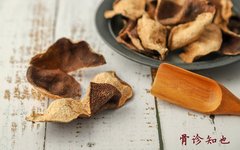
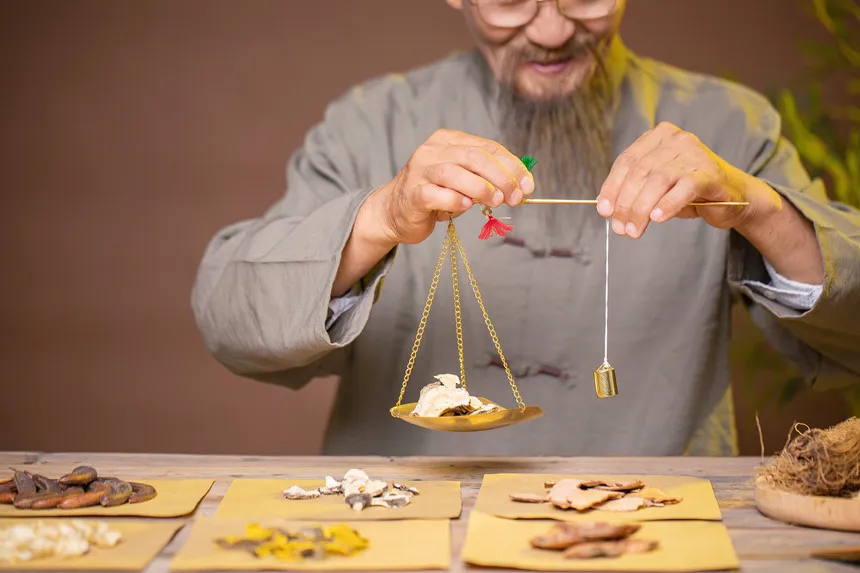


Phlegm-dampness is a pathological condition that refers to a symptom of a person’s constitution. It is also known as a cold and damp constitution, often caused by improper diet or illness.
Here, “phlegm” does not merely refer to the common understanding of phlegm, but rather to the abnormal accumulation of body fluids, which is a pathological product; “dampness” can be divided into internal and external dampness. External dampness refers to humidity in the air or environment, such as being caught in the rain or living in a damp place, which can invade the body and cause illness; internal dampness refers to improper functioning of the digestive system, leading to uncontrolled flow of water within the body, resulting in the accumulation of body fluids, either due to excessive moisture in the diet, or from alcohol, dairy, or cold beverages, causing internal dampness.
Individuals with a phlegm-damp constitution are often seen in those who are overweight or have recently gained weight. Such individuals typically exhibit obesity, a soft and distended abdomen, oily skin, excessive and sticky sweating, chest tightness, excessive phlegm, a pale yellow complexion, slightly swollen eyelids, easy fatigue, a generally enlarged tongue with a white greasy or sweet coating, a heavy body feeling, a preference for rich, sweet, and sticky foods, normal or loose stools, and infrequent or slightly turbid urination. Their temperament tends to be mild and steady, often patient.
1
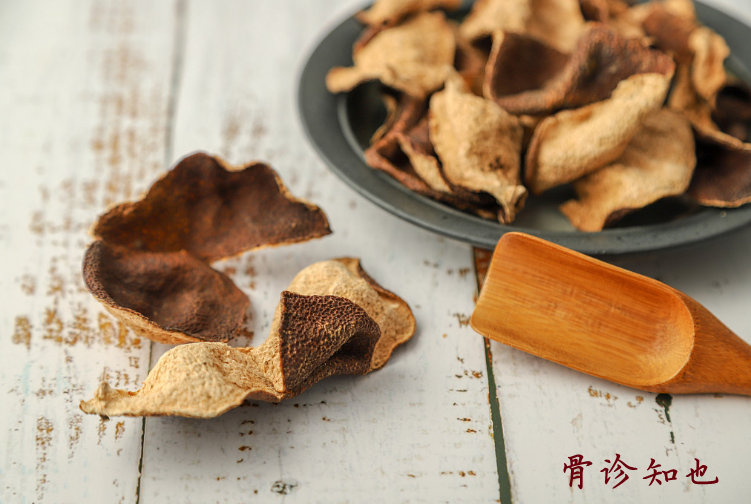
To eliminate phlegm-dampness, are you only familiar with Erchen Decoction? No, Zhang Xichun’s formula is even more remarkable. When it comes to phlegm-dampness, many people often recall the well-known saying: the spleen is the source of phlegm, and the lungs are the reservoir of phlegm.
The generation of phlegm-dampness is most closely related to the spleen and lungs. If the spleen cannot transform and transport water and dampness, it will produce phlegm-dampness, which then travels upward to the lungs, affecting lung qi, preventing it from dispersing and descending, thus turning the lungs into a container, a reservoir for phlegm.
However, the issue of phlegm-dampness is not only related to the spleen and lungs but also involves the kidneys.
Strangely, what is the relationship between phlegm-dampness and the kidneys? Let’s start with a medical case.
During the Republic of China period, there was a woman with severe phlegm-dampness, to the point where she could not eat, and even slight activity would leave her breathless. After three years of herbal treatment, she was still not cured, until she found the well-known Zhang Xichun.
After diagnosing her pulse and observing her severe shortness of breath, Zhang Xichun immediately recognized it as a clear case of kidney deficiency, where the kidneys could not hold qi. Therefore, he added several kidney-tonifying herbs to the phlegm-resolving formula, and the woman recovered after just a few doses.

The kidneys govern storage, and they can hold some very precious and essential substances in the body. However, the kidneys can also be erratic; sometimes they can hold well, and sometimes they cannot. Additionally, the kidneys also govern the metabolism of water. If kidney qi is not solid, dampness will naturally overflow, flooding the lungs, leading to cough and breathlessness.
We can imagine the kidneys as a wooden barrel. If one day this barrel becomes damaged, the water inside will leak out. Therefore, kidney deficiency does not only mean that the essence and qi in the kidneys are consumed too quickly and insufficient; it can also leak out. Where does it leak to? It leaks to the bladder. Soon, the bladder becomes filled, transitioning from an empty state to a full one.
At this point, the water and fluids in the spleen and stomach cannot be expelled downwards. Originally, these fluids could be eliminated through the bladder, but now they accumulate in the spleen and stomach, gradually forming phlegm-dampness. Thus, there is a saying in TCM that the kidneys are the source of phlegm.
2
Returning to the case, what formula did Zhang Xichun prescribe? The Phlegm-Resolving Decoction.
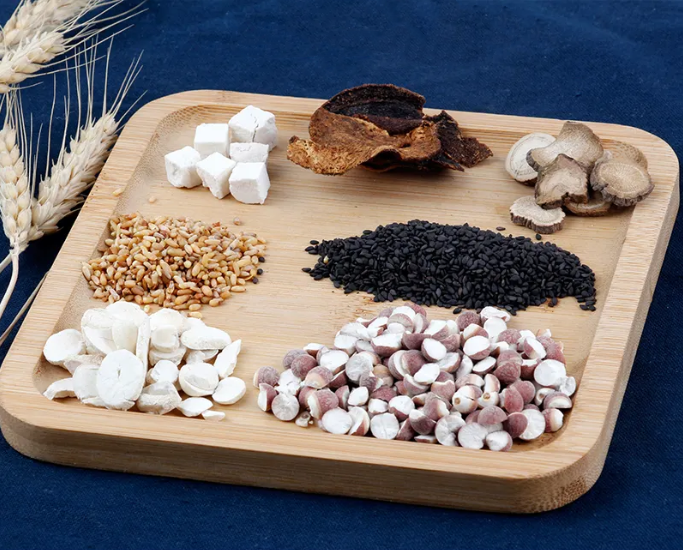
As the name suggests, it helps to regulate phlegm-dampness from the lungs to the spleen, and then to the kidneys, clearing it from top to bottom. This concept is quite profound.
Phlegm-Resolving Decoction: 30g of Euryale (Qian Shi), 12g of Pinellia (Ban Xia), 9g of Black Sesame (Hei Zhi Ma, toasted and crushed), 6g of Biota Seed (Bai Zi Ren, toasted and crushed), 6g of White Peony (Bai Shao), 6g of Dried Tangerine Peel (Chen Pi), 6g of Poria (Fu Ling), decocted in water for oral administration.
Pinellia, Dried Tangerine Peel, and Poria, along with a piece of Licorice, form the classic Erchen Decoction, which primarily resolves phlegm from the spleen and lungs. The Phlegm-Resolving Decoction can be seen as a modified version of Erchen Decoction. In Zhang Xichun’s own words, the Phlegm-Resolving Decoction can compensate for the shortcomings of Erchen Decoction. Of course, this does not mean that Erchen Decoction is ineffective; it is the foundational formula for phlegm resolution, akin to the solid foundation upon which a tall building is constructed. If the foundation is not well laid, the building cannot stand firm.
Zhang Xichun’s Phlegm-Resolving Decoction has two main characteristics:
First, he placed Euryale at the forefront, using a significantly larger amount than Pinellia, which is traditionally used for phlegm resolution.

What is the function of Euryale?
It can tonify, not only replenishing kidney essence but also sealing leaks. This way, the original essence will not leak out, and the replenished essence can also be retained. From another perspective, sufficient kidney qi can also timely transform some phlegm-dampness into qi.
Additionally, Euryale not only enters the kidneys but also the spleen. The “Compendium of Materia Medica” states that it is a “spleen and kidney herb,” and the “New Materia Medica” states that it can “tonify the spleen and secure essence.”
Historically, there was a person who had a special fondness for Euryale, and that person was Su Shi. Not only was Su Shi a great writer, but he also paid great attention to health preservation. It is said that he chewed Euryale daily, year after year, and maintained sharp thinking and creativity even in old age.
People with diarrhea or frequent urination can consume more Euryale, not necessarily chewing it; it can be cooked into porridge or ground into powder. After a period of consumption, both innate and acquired essences can be cultivated.
Second, he added Black Sesame and Biota Seed, which nourish yin and moisten dryness.
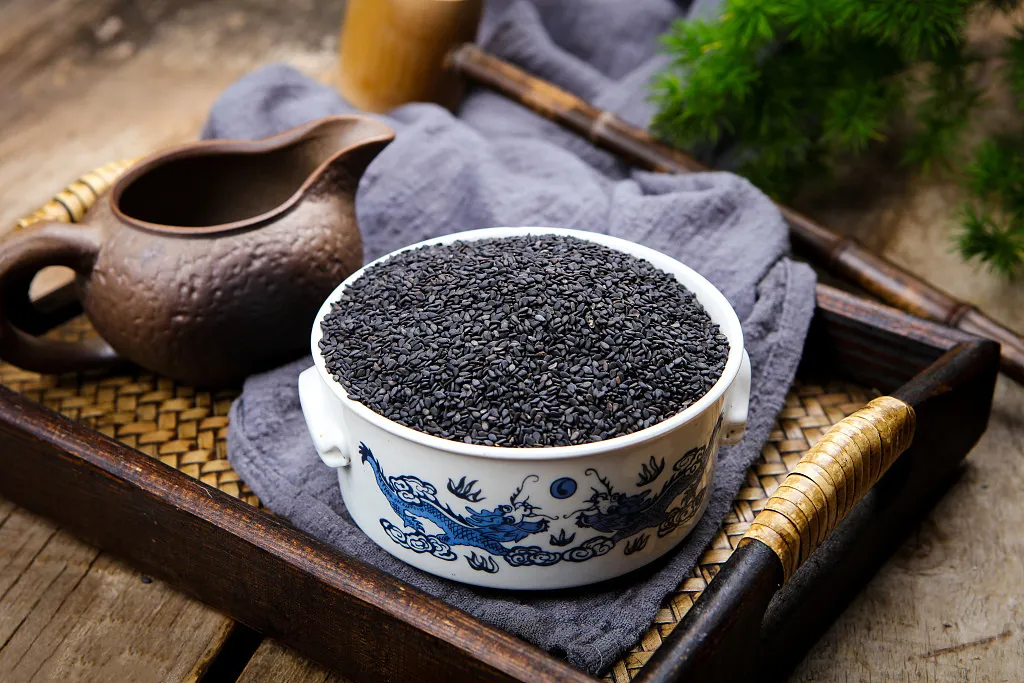
While Pinellia is an excellent phlegm-resolving herb, it has a warm and dry nature, which can easily lead to heat.
Black Sesame is the black seed of the sesame plant, and Biota Seed is the seed of the arborvitae. These seeds contain a lot of oil and have a sweet and moistening nature, which can counteract the warming and drying properties of Pinellia, and also moisten the intestines, helping to expel phlegm-dampness through bowel movements. Black Sesame and Biota Seed also have kidney-tonifying effects, assisting Euryale in nourishing kidney essence.
White Peony and Poria can promote urination, guiding phlegm-dampness into the bladder for elimination through urination.
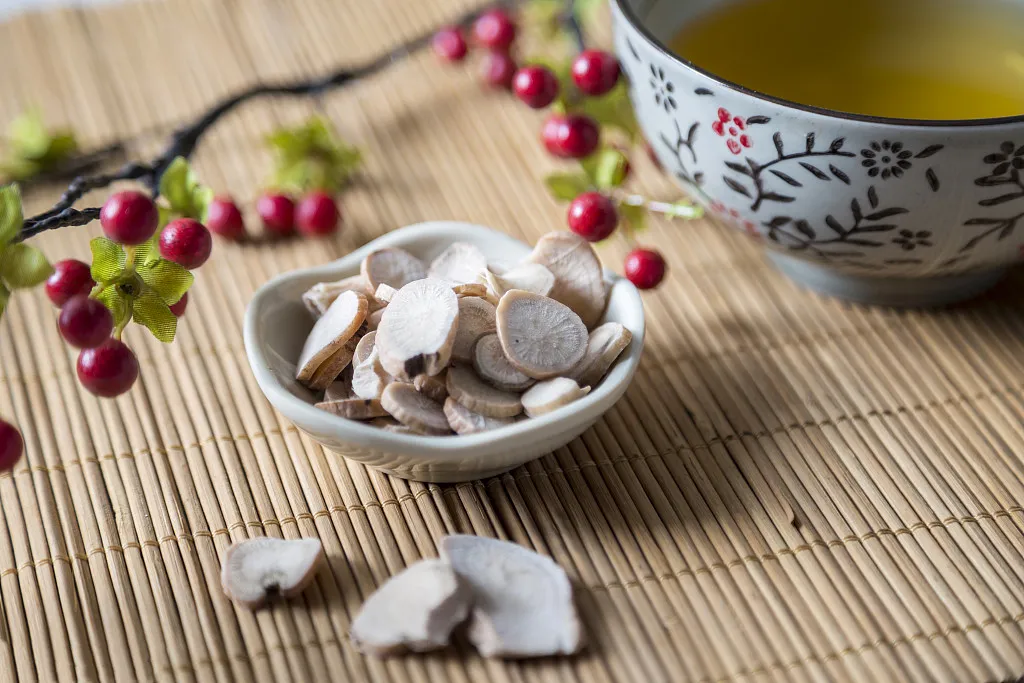
Dried Tangerine Peel’s main function here is to regulate qi. Phlegm-dampness is merely a mass of stagnation in the body, akin to a stagnant pool in nature. How does it move? It relies on the qi within the body. Dried Tangerine Peel helps to push the phlegm-dampness downward, thus it can regulate qi and resolve phlegm.
The thought process behind the Phlegm-Resolving Decoction is as follows: first, use Pinellia to dissolve phlegm-dampness, then, with the descending action of Dried Tangerine Peel, guide the phlegm-dampness downward. Next, use Black Sesame and Biota Seed to moisten the intestines, and White Peony and Poria to promote urination, allowing the expelled phlegm-dampness to exit through both bowel movements and urination. Euryale can tonify the kidneys, attacking from one side while supplementing from the other, effectively cutting off the source of phlegm-dampness.
3
Who is suitable for this formula?

Because the Phlegm-Resolving Decoction has the effects of drying dampness, resolving phlegm, and calming the lungs, it can primarily eliminate phlegm from various parts of the body. If phlegm is obstructed in the chest, what symptoms may arise? Fullness and shortness of breath, or if it is lodged in the lungs, it may cause cough and wheezing; if it is stagnant in the heart area, it may lead to palpitations and insomnia; if it is obstructed in the stomach, it may cause bloating and belching; if it is retained in the meridians, it may result in numbness or weakness in the limbs; if it is lodged in the joints or tendons, it may cause difficulty in movement and pain; if it causes liver qi to rise, it may lead to dizziness and an inability to sit or stand.
In summary, if you have the above symptoms along with a thick and greasy tongue coating, it is time to resolve the phlegm and prevent it from running rampant.
Individuals with phlegm-dampness should avoid living in damp environments; during rainy seasons, they should be cautious of dampness invading their bodies. Those with a phlegm-damp constitution often have a heavy body and easily tire, so they should consistently engage in physical exercise, walking, jogging, playing ball, practicing martial arts, performing Baduanjin (Eight Pieces of Brocade), Wuqinxi (Five Animal Frolics), and various dances. The amount of activity should gradually increase, allowing loose flesh to transform into firm, dense muscle.
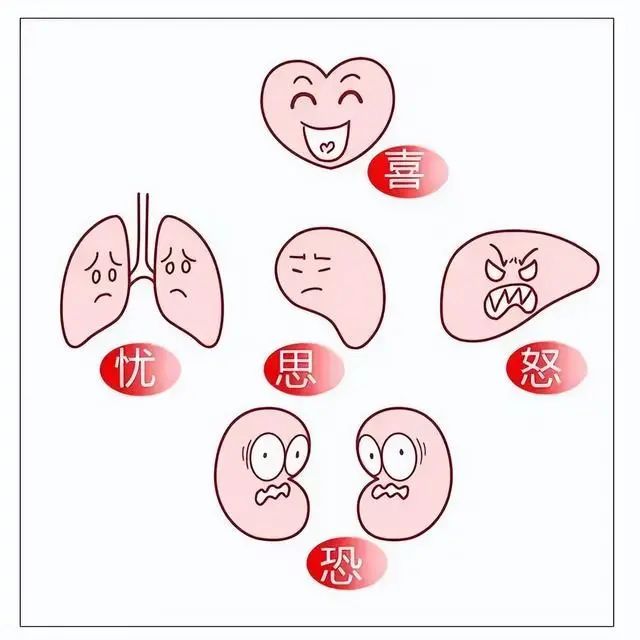
Those with damp constitutions should avoid living in damp environments and should be cautious of dampness during rainy seasons. Such individuals should also regularly check their blood sugar, blood lipids, and blood pressure; those who are drowsy should gradually reduce their sleep time and engage in more outdoor activities to enjoy sunlight; bathing should be done with warm water, to the extent that the skin turns slightly red and sweating occurs; clothing should be kept loose, made of breathable natural fibers such as cotton, linen, and silk, which facilitate sweat evaporation and help eliminate internal dampness.
Meals should be regular, especially breakfast, which should not be skipped. Foods should focus on strengthening the spleen and eliminating dampness, such as Job’s Tears (Yi Yi Ren), Red Adzuki Beans (Chi Xiao Dou), Euryale (Qian Shi), Chinese Yam (Shan Yao), Winter Melon (Dong Gua), Crucian Carp (Jin Zhu Yu), and Millet (Xiao Mi). Those with a phlegm-damp constitution should avoid rich, sweet, and greasy foods, as they are not conducive to the spleen’s function. It is best to consume light, easily digestible, and varied foods. Each meal should be about 70% full, avoiding overeating.
Focus on a light diet, engage in outdoor activities, enjoy sunlight, and maintain regular exercise.

Warm Reminder: The various prescriptions and formulas mentioned in this article are for reference and learning purposes for professional TCM practitioners only and should not be used as prescriptions. Please do not self-medicate blindly; this platform does not bear any responsibility for any consequences arising from this!


